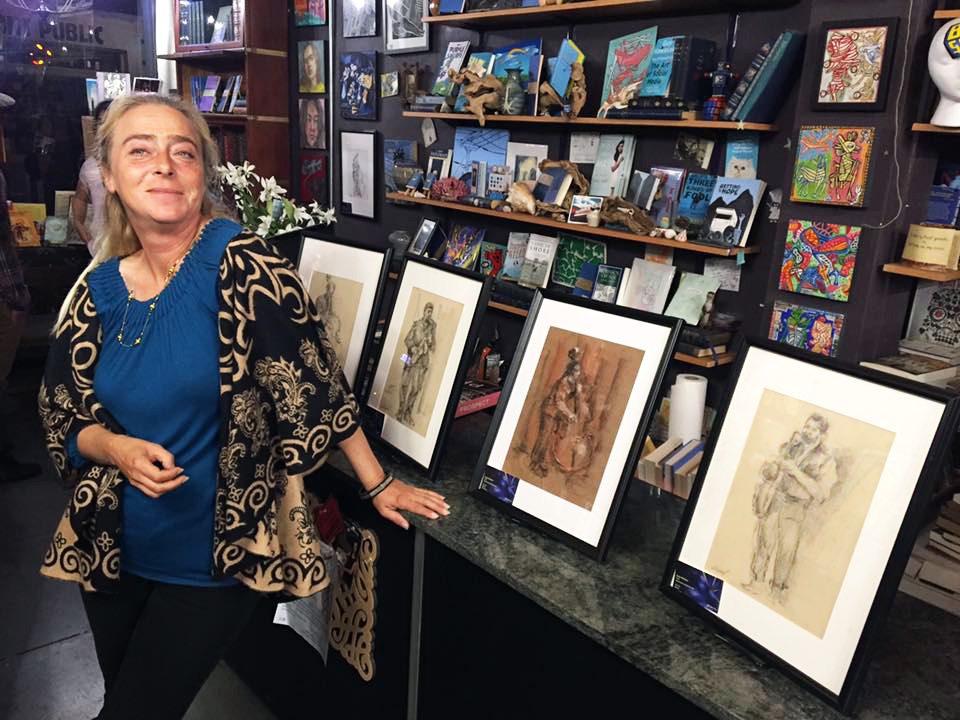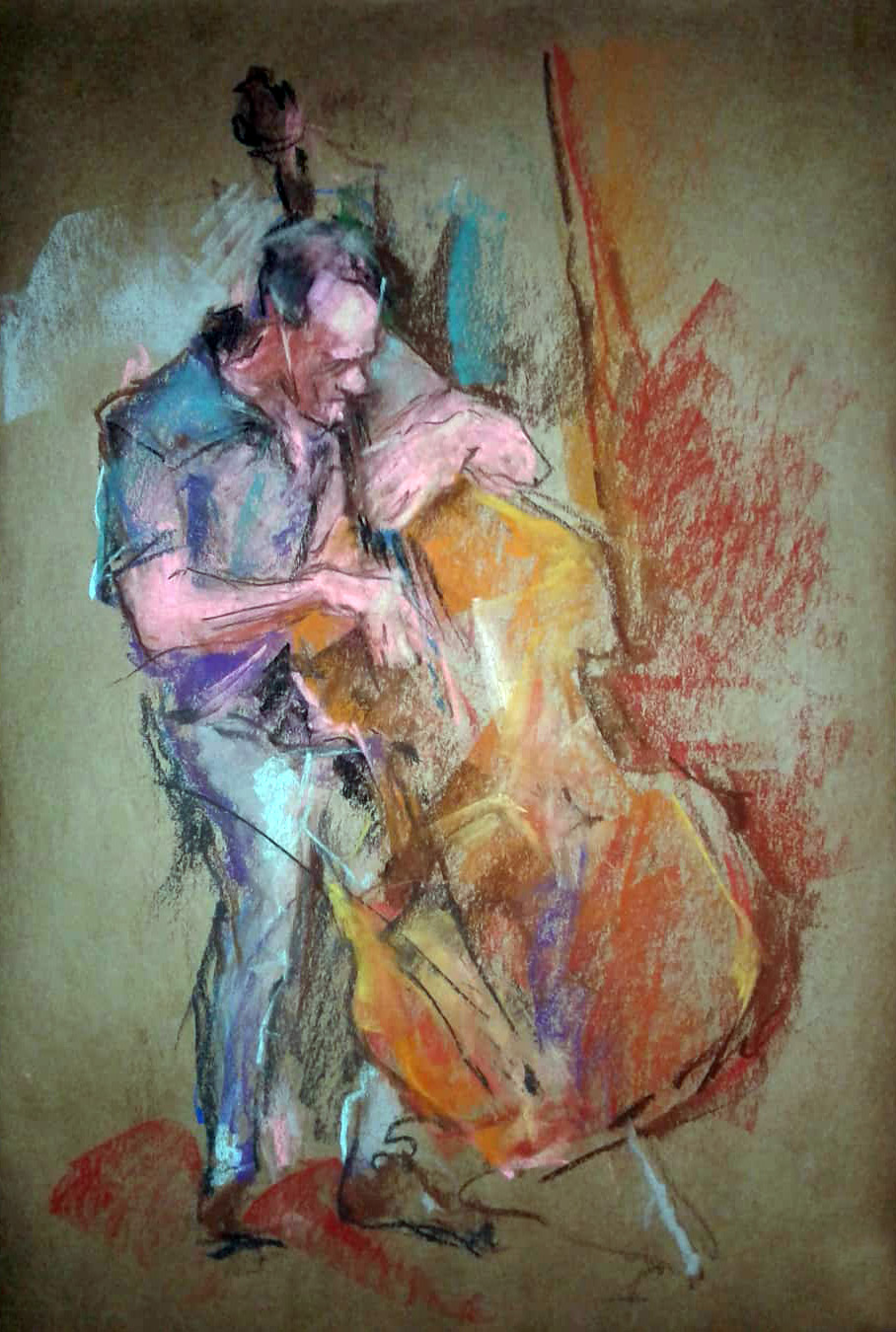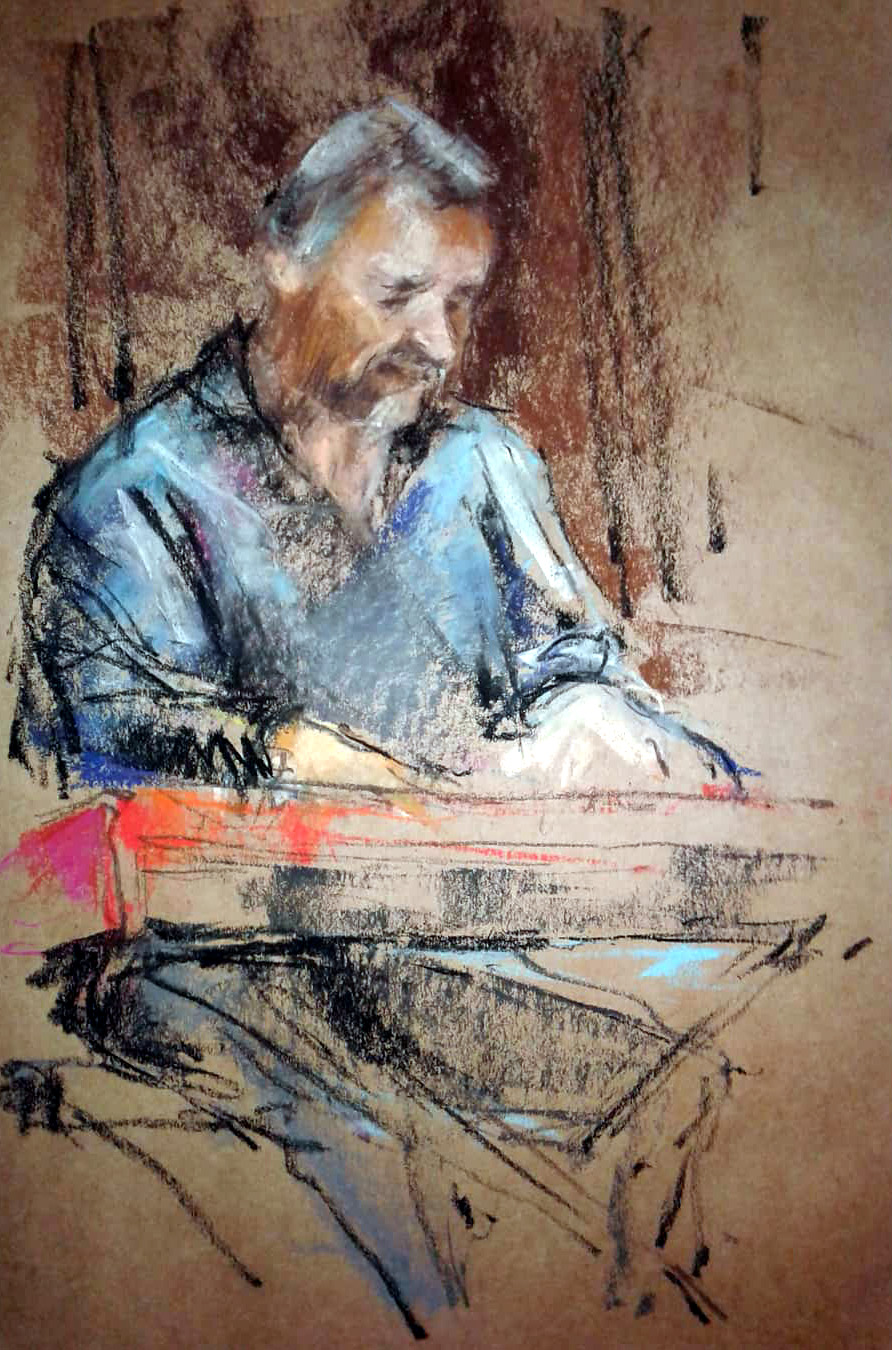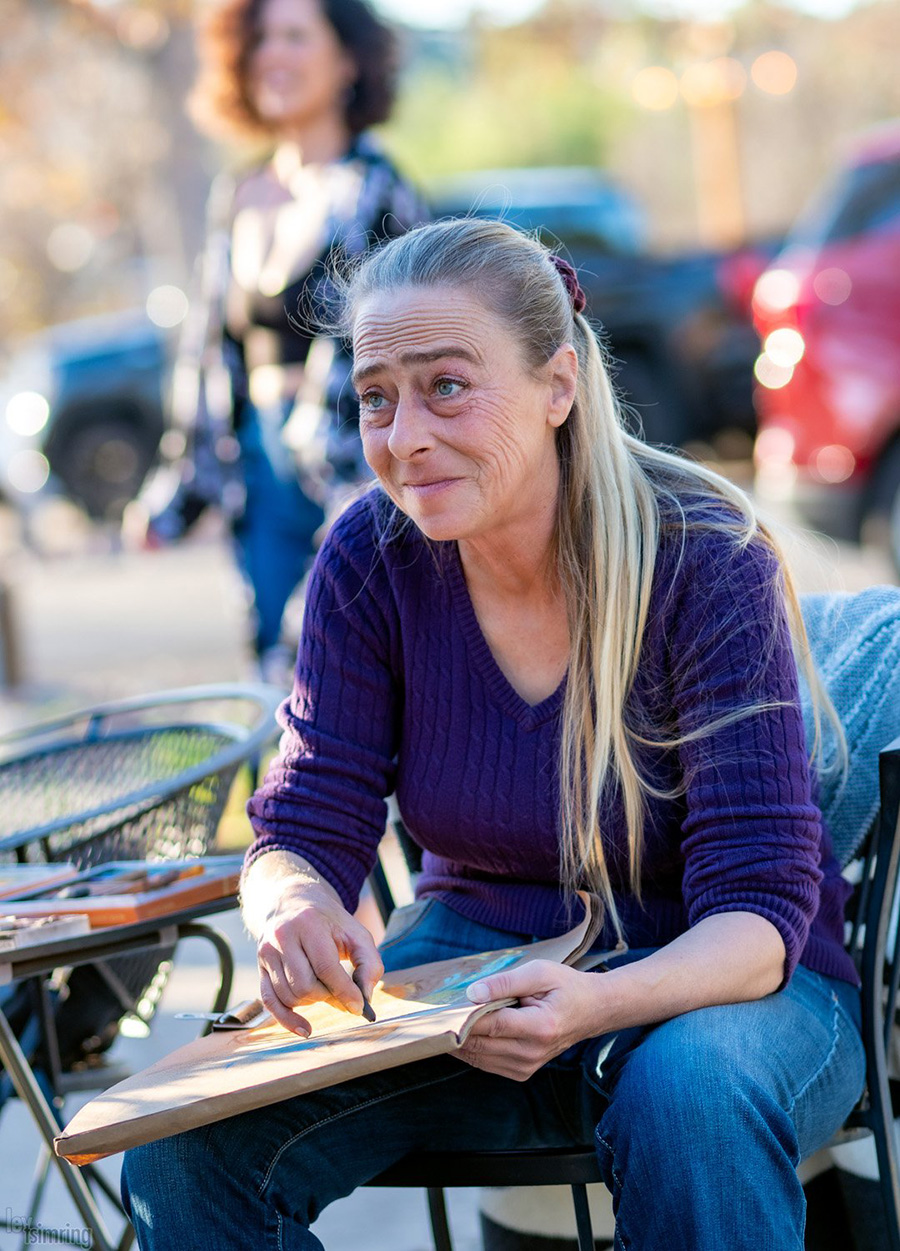The Particular Answers I was Looking for that I Just Happened to Find in a Bottle of Whiskey by Carina WheatleyJuly 2024

Katya Mezhova displays her art.
KATYA MEZHOVA realized she was an artist by the age of 12, when her drawings made a splash among her family and her school instructors. Born in Moscow on September 29, 1970, to a mixed Russian and Jewish family of notable and intrepid heritage, her father, Sergei Mezhov, was the Russian national champion of Go, an ancient board game. Her mother was an esteemed lecturer in physics to Moscow’s up-and-coming brightest students. Her revered grandfather was the basis of a character in Isak Babel’s Red Cavalry and her grandmother, with whom Katya immigrated to the US in 1995, ran the railroad network organization in Southern Russia during World War II. Her classmates nicknamed her “Schwabra” (Broom) for the way Katya dealt with adversity—organizational or bi-pedal.

Katya’s portrait of Rob Thorsen.
Adversity is the constant companion of Jewish heritage in Russia, and Katya learned about it early; this seeded her mind with a desire to thrive elsewhere. Once, she was caught on the Moscow subway with a cargo of matzoh—from the one bakery in Moscow permitted to bake it—by a professor at her university department. The discovery of her partial Jewish heritage pushed her back in her art studies, and among classmates. She eventually graduated from university with a degree in textile design and fabrication. She is the only woman around for miles who comes with her own loom.
A brighter spot in Katya’s life was music—Russian folk and the jazz dissident musicians played that circulated clandestinely among friends who bonded over the risks. Some of her American friends still recall examples of sly tunes that could have landed youth in jail for possession then; one called “Ya Yu Blu’ Boogie Woogie” (I Love Boogie Woogie) was especially frowned on by authority. Among her Moscow circle, rare music and art was a badge of honor that separated Intel’,yigent from everybody else. This was reinforced in California, where Katya became a regular at Russian pop-up music gatherings in parks, hosted by fellow emigres who brought over famous Soviet-era musicians to perform live, in open air, at campgrounds over weekends. Campers brought families, food, vodka, and discussion, and melody filled the nights. Music bonded the audience, then. Katya later brought the same outlook to San Diego’s music scene.

Mikan Zlatkovich, a frequent subject of Katya’s art.
When the Soviet Union ended and Katya’s hopes for a brighter future beckoned, Katya took the opportunity to emigrate to the US in company with her grandmother, arriving in Atlanta in 1995. Romance took her to San Diego, where she’s been ever since. Throughout the years, Katya has worked as a graphic artist and muralist and creator of large-scale works that adorn walls, mansion interiors, and buildings in San Diego and Los Angeles.
In the past decade, Katya discovered San Diego’s jazz scene and rapidly gained a following as a respected artist that caught the essence of San Diego’s music greats on their home turf: the stage. Producing perhaps hundreds of drawings of the likes of Gilbert Castellanos, Milan Zlatkovich, Rob Thorsen, Bob Boss, Jamie Shadowlight, and many others in real time, she created not only dynamic and vivid art, but a unique historical record of San Diego’s contemporary jazz performers that has no known similar artifact. She caught the tempo of the times as well as the subjects, freezing the essence of the performers’ power in the colorful moments of their creation. Her drawings are as important to the historical record of San Diego as they are to its cultural record. Beyond that, Katya translates music into color; Bob Boss remarked on her colorful take of his performance once, only for Katya to tell him “those are the colors you played.”
Like her earlier years in Russia, Katya used her talents to add beauty to the world around her and create a network of those who cultivate aesthetics as self and mutual respect. The result is a kind of homage to the human spirit, adding some vital brilliance to what otherwise might be a world, reeking of drab conformity.

Katya at work.
Happy in her work, Katya never hesitated to take a front row seat of her own. As Rob Thorsen put it, “We first met at Panama 66 at the Wednesday night jam sessions. She was a regular there and then branched out to attending venues and performances all over San Diego with her paint brush in hand. I saw her often also painting at the Westgate Hotel, Jack and Giulio’s Italian Restaurant and others. She always likes to be able to sit right in front, and having an obstructed clear view of the musicians–often she would call and asked me to save a table for her; a true artist!”
And now, Katya’s works are going up for sale.
Katya Mezhova is fighting a battle against aggressive cancer. Cancer is an expensive disease; Katya’s friends are helping her find markets for her artistry of a decade, so to buy time for a future. Recently released from hospital—alone—she faces daunting health challenges and high costs for past and continuing treatment. A GoFundMe page has been started for her to which those who appreciate art, jazz, local history, and the critical needs of a great talent are invited to contribute. Click here to donate: https://gofund.me/ef5d28eb

